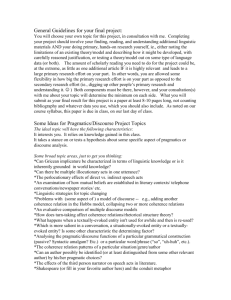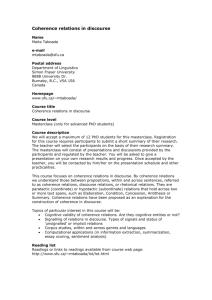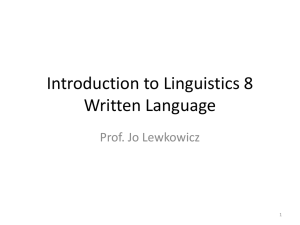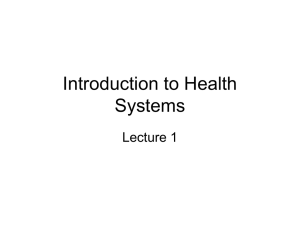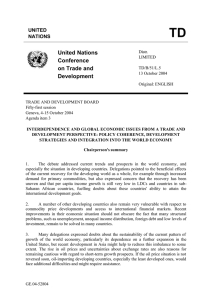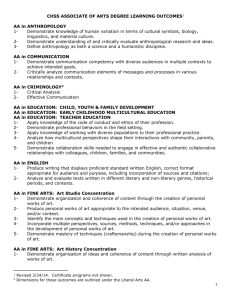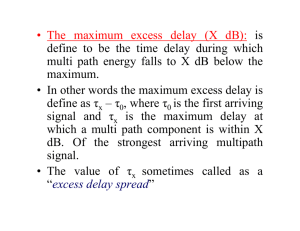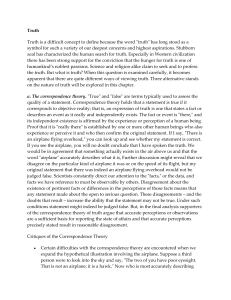PHD GESURA EVANS - University of Nairobi
advertisement
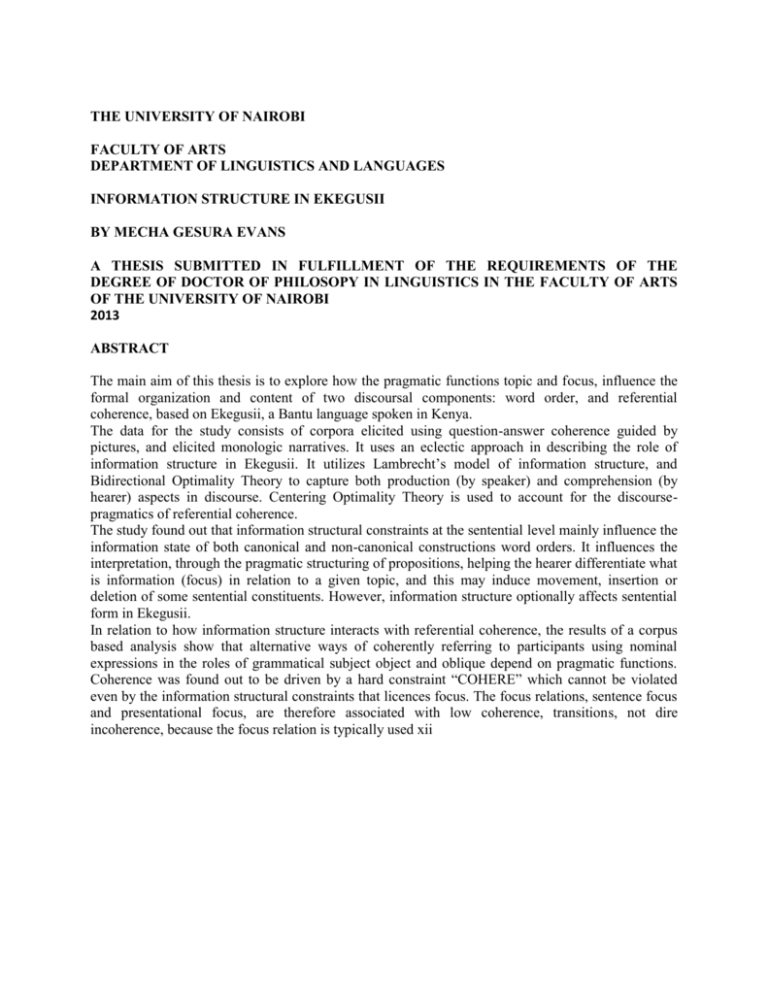
THE UNIVERSITY OF NAIROBI FACULTY OF ARTS DEPARTMENT OF LINGUISTICS AND LANGUAGES INFORMATION STRUCTURE IN EKEGUSII BY MECHA GESURA EVANS A THESIS SUBMITTED IN FULFILLMENT OF THE REQUIREMENTS OF THE DEGREE OF DOCTOR OF PHILOSOPY IN LINGUISTICS IN THE FACULTY OF ARTS OF THE UNIVERSITY OF NAIROBI 2013 ABSTRACT The main aim of this thesis is to explore how the pragmatic functions topic and focus, influence the formal organization and content of two discoursal components: word order, and referential coherence, based on Ekegusii, a Bantu language spoken in Kenya. The data for the study consists of corpora elicited using question-answer coherence guided by pictures, and elicited monologic narratives. It uses an eclectic approach in describing the role of information structure in Ekegusii. It utilizes Lambrecht’s model of information structure, and Bidirectional Optimality Theory to capture both production (by speaker) and comprehension (by hearer) aspects in discourse. Centering Optimality Theory is used to account for the discoursepragmatics of referential coherence. The study found out that information structural constraints at the sentential level mainly influence the information state of both canonical and non-canonical constructions word orders. It influences the interpretation, through the pragmatic structuring of propositions, helping the hearer differentiate what is information (focus) in relation to a given topic, and this may induce movement, insertion or deletion of some sentential constituents. However, information structure optionally affects sentential form in Ekegusii. In relation to how information structure interacts with referential coherence, the results of a corpus based analysis show that alternative ways of coherently referring to participants using nominal expressions in the roles of grammatical subject object and oblique depend on pragmatic functions. Coherence was found out to be driven by a hard constraint “COHERE” which cannot be violated even by the information structural constraints that licences focus. The focus relations, sentence focus and presentational focus, are therefore associated with low coherence, transitions, not dire incoherence, because the focus relation is typically used xii for shifting reference in discourse. The topic relations are associated with higher coherence transitions when attention is focused on a given topical entity. The results of the study demonstrate the need for incorporation information structure, an independent component of grammar, in handling the problem of pragmatic motivation in the grammar of human languages at the micro- and macro-syntactic levels of discourse. Though the study is theory oriented and on Ekegusii, it is relevant to understanding how packaging information affects discourse, by considering the syntax, semantics and pragmatics (the ‘semiotic circle’) of information in general. Is of use to persons who are interested in understanding how messages are to be optimaly coded and decoded in human communication by interlocutors in Ekegusii, and beyond any given language.
